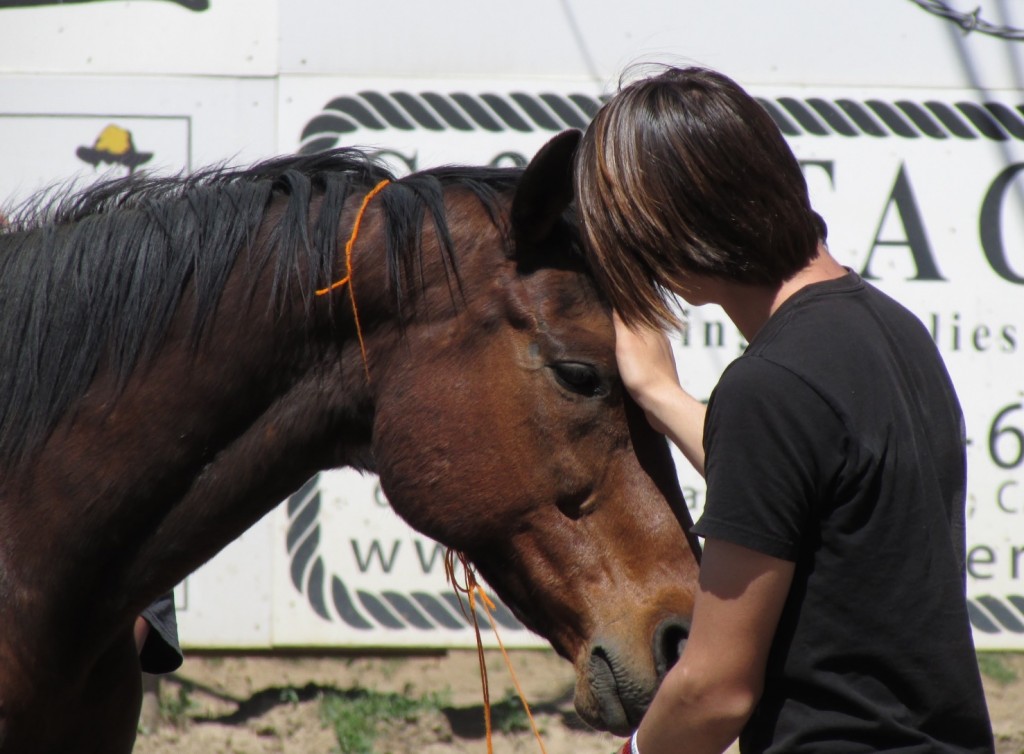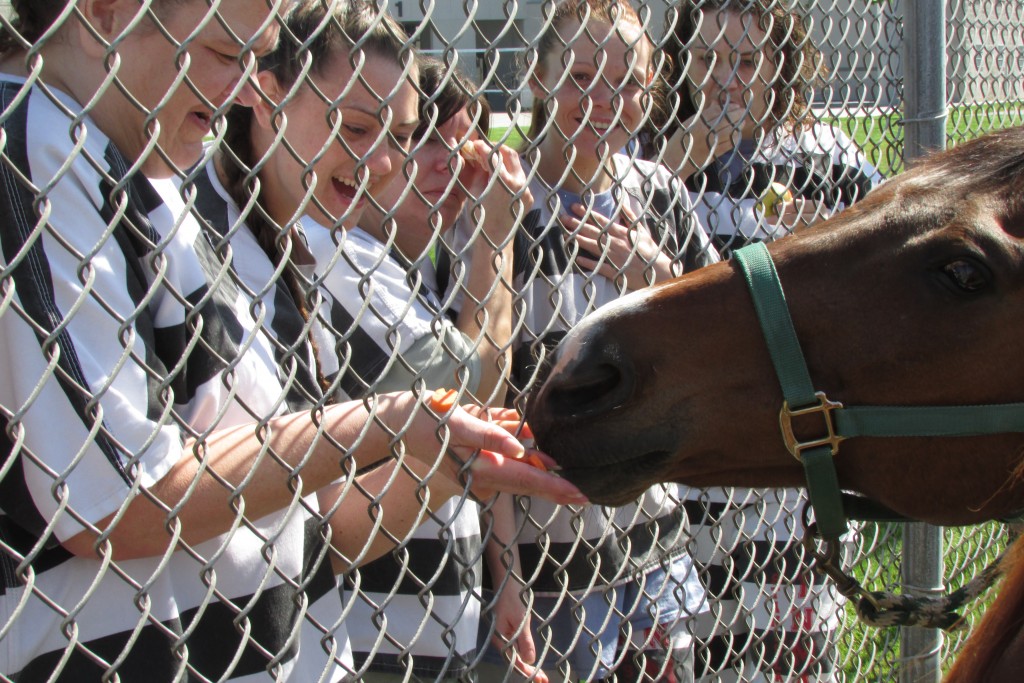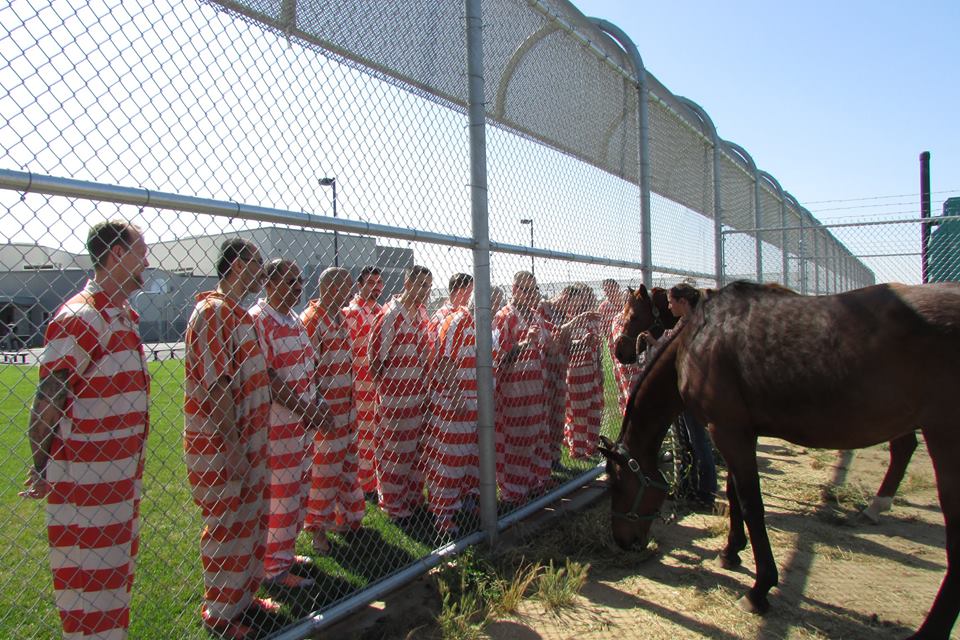
A foster child has a life-changing experience after connecting with a Thoroughbred in California. Photo courtesy Julie Baker of Healing Arenas, Inc.
His hair hung in a long fringe hiding his face, and his affect was one of hanging back, of remaining separate from the group.
Until one day the boy made eye contact with the fiery Thoroughbred Viva, a mare who rarely let anybody touch her on the face. He walked quietly over and reached his hand up placing it firmly on her forehead. The two now stood together as if each recognizing a friend in the other.
“That moment just stands out for me,” says Julie Baker, president of Healing Arenas, Inc., a California-based nonprofit whose mission is to support emotional healing through interaction with horses. “After a few minutes, suddenly the bangs got swept away from his face, and the boy took over leadership of the entire group he was in, and it was as if he instantly became this young man who was able to control his environment.”
Baker, who has previously facilitated the Thoroughbred Retirement Foundation’s Second Chances program in California, announced this month she would parlay her experience helping inmates and foster children into a broader approach to foster emotional healing among amputees, veterans, police officers and other target populations, through her equine-assisted program.
Working with colleague Maria Bennett, a horse trainer and daughter of an amputee, Baker is reaching out to universities and other stakeholders to launch the new program, Stable Journeys, to offer therapeutic support to people who have lost limbs.

Inmates participating in the TRF’s Second Chances program in California last year react to the experience of touching a Thoroughbred.
The decision to expand the concept of healing through horses, which began in 2011 when Baker launched a TRF-sponsored Second Chances program for California inmates, comes on the heels of a successful trial with amputees last autumn. Amputees and their families who participated in the trial program reported feeling changed and comforted by their connection to horses, she says.
“I’ve seen so many people whose lives were changed by interacting with horses in our programs,” Baker says. “From the inmates in the TRF Second Chances program to foster children, to the families in the amputee trial we did. Working with horses has helped so many overcome emotional obstacles … and feel empowered.”
And what this type of work does for ex-racehorses is to reward hardworking Thoroughbreds for all they’ve done on the racetrack, adds Baker, a former exercise rider and trainer on the California circuit.
“Giving former racehorses a retirement job like this is my payback for all those years I worked horses so hard,” she says. “It just really, really touches me to be able to give back to them.”
Ex-racehorse Thoroughbreds who were in the founding herd of Baker’s Second Chances program are Viva Pentelicus, Z. Sheik, Who’s Kidding Who and Al Stone. These horses have been integral in providing healing and development for people like the hesitant foster child who was somehow drawn to the side of one of the herd’s most head-shy animals.
“When I saw that boy reach his hand out and rest it on Viva’s forehead, I was like, ‘Whoa! She doesn’t let people near her face.’ But she did him,” Baker says. “And that boy was transformed after that. It’s just one small example of how working with horses on the ground can open up pathways in the brain” and improve life for people from all walks.




Where are they located out of?
Debra,
The TRF OTTBs came from Oklahoma, which was the closet TRF farm to Healing Arenas when the partnership began.
It is wonderful to hear how these horses can get through the tough exteriors of broken humans.